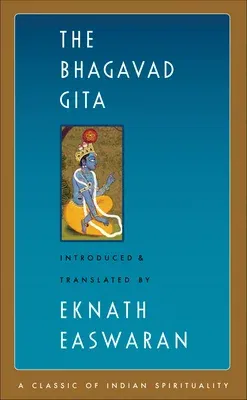The Bhagavad Gita is the best known of all the Indian scriptures, and
Eknath Easwaran's best-selling translation is reliable, readable, and
profound.
Easwaran's 55-page introduction places the Bhagavad Gita in its
historical setting, and brings out the universality and timelessness of
its teachings. Chapter introductions clarify key concepts, and notes and
a glossary explain Sanskrit terms.
Easwaran grew up in the Hindu tradition in India, and learned Sanskrit
from a young age. He was a professor of English literature before coming
to the West on a Fulbright scholarship. A gifted teacher, he is
recognized as an authority on the Indian classics and world mysticism.
The Bhagavad Gita opens, dramatically, on a battlefield, as the warrior
Arjuna turns in anguish to his spiritual guide, Sri Krishna, for answers
to the fundamental questions of life. Yet, as Easwaran points out, the
Gita is not what it seems - it's not a dialogue between two mythical
figures at the dawn of Indian history. "The battlefield is a perfect
backdrop, but the Gita's subject is the war within, the struggle for
self-mastery that every human being must wage if he or she is to emerge
from life victorious."
Arjuna's struggle in the Bhagavad Gita is acutely modern. He has lost
his way on the battlefield of life and turns to find the path again by
asking direct, uncompromising questions of his spiritual guide, Sri
Krishna, the Lord himself. Krishna replies in 700 verses of sublime
instruction on living and dying, loving and working, and the nature of
the soul.
Easwaran shows the Gita's relevance to us today as we strive, like
Arjuna, to do what is right.
"No one in modern times is more qualified - no, make that 'as
qualified' - to translate the epochal Classics of Indian Spirituality
than Eknath Easwaran. And the reason is clear. It is impossible to get
to the heart of those classics unless you live them, and he did live
them. My admiration of the man and his works is boundless." - Huston
Smith, author of The World's Religions

